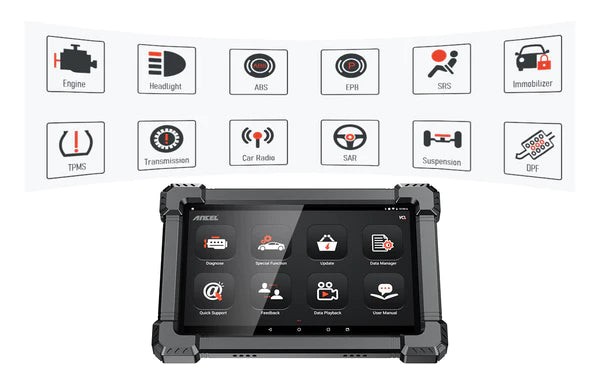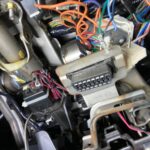Understanding your car’s health is crucial for its longevity and your safety. OBD2 scanners offer a window into your vehicle’s diagnostics, but a common question is: Does a car have to be on to use OBD2? The answer isn’t always straightforward. This article will delve into the specifics of using an OBD2 scanner, clarifying when your car needs to be running and when it doesn’t.
Understanding OBD2 Scanners
On-Board Diagnostics II (OBD2) scanners are invaluable tools for car owners and mechanics alike. They communicate with your car’s computer, reading diagnostic trouble codes (DTCs) and providing insights into potential issues. These devices can help identify problems early on, potentially saving you time and money on costly repairs.
Engine On vs. Engine Off: When to Use Your OBD2 Scanner
While the common belief is that your car must be running to utilize an OBD2 scanner, this isn’t entirely true. Many basic functions of an OBD2 scanner can be performed with the engine off. This includes reading stored DTCs, checking for emissions readiness, and accessing some vehicle information. Using the scanner with the engine off can also be safer, preventing potential electrical mishaps.
However, certain advanced functions require the engine to be running or in the “accessory” position (also known as “key on, engine off” or KOEO). This is because these tests require live data streaming from various sensors that only operate when the engine is active or the ignition is in the accessory mode. These functions include:
- Live Data Monitoring: Observing real-time sensor readings such as engine RPM, coolant temperature, and oxygen sensor voltage.
- Component Testing: Activating specific components like fuel injectors or solenoids to assess their functionality.
- Emissions Testing: Certain emissions tests require the engine to be running at specific operating temperatures.
Specific Scenarios: When Engine Status Matters
- Checking the Check Engine Light: If your check engine light is illuminated, you can usually retrieve the stored DTCs with the engine off. However, to fully diagnose the issue, live data monitoring with the engine running may be necessary.
- Monitoring Performance: To assess real-time engine performance, fuel efficiency, and other parameters, the engine must be running to provide live data to the scanner.
- Troubleshooting Intermittent Problems: Issues that occur sporadically often require live data monitoring while driving to capture the problem in action. This necessitates a running engine.
Choosing the Right OBD2 Scanner
Different OBD2 scanners offer varying levels of functionality. Some basic code readers only retrieve DTCs, while more advanced scan tools provide live data, bi-directional control, and other sophisticated features. Understanding your needs will help you choose the right tool. For instance, the Ancel X7 offers extensive features including key programming, ABS bleeding, and oil resets.
Conclusion
So, does your car have to be on to use an OBD2 scanner? It depends. Simple tasks like reading stored codes can be done with the engine off, while more complex diagnostics require a running engine. Knowing the difference allows you to use your OBD2 scanner effectively and safely. Understanding your scanner’s capabilities and your car’s needs will empower you to maintain your vehicle and address potential problems efficiently.


